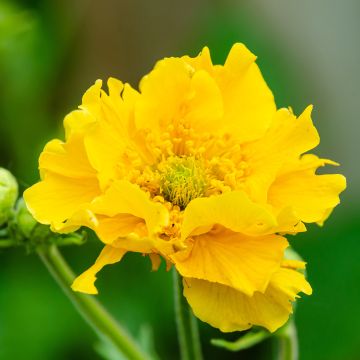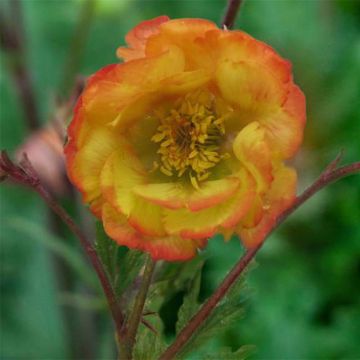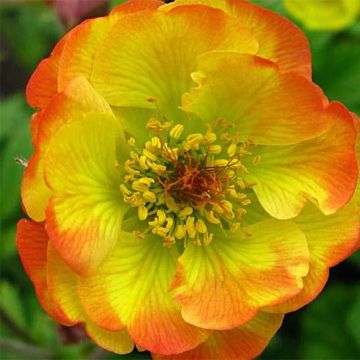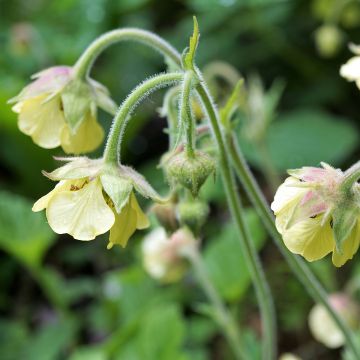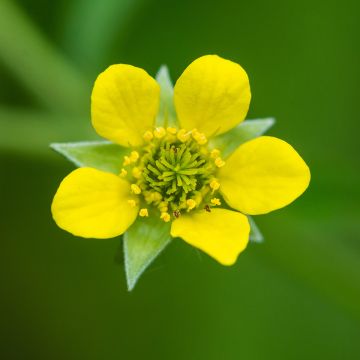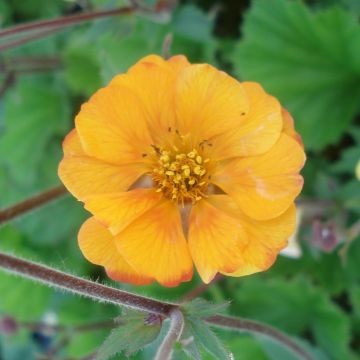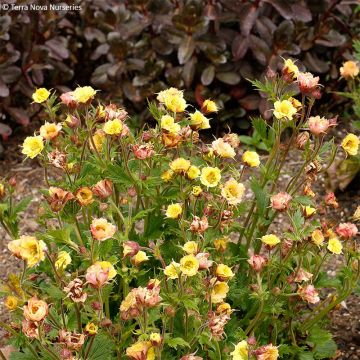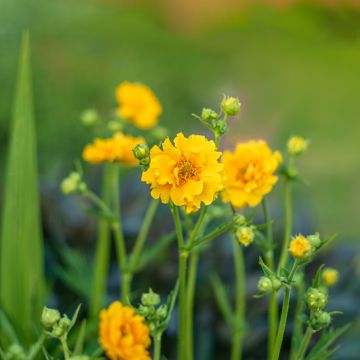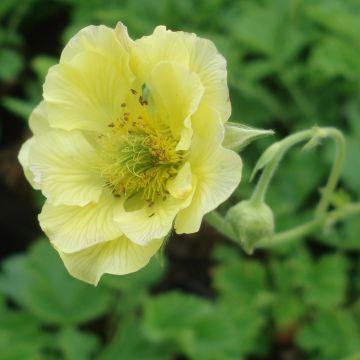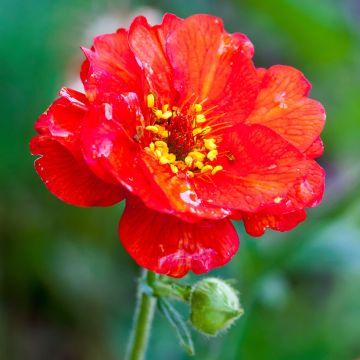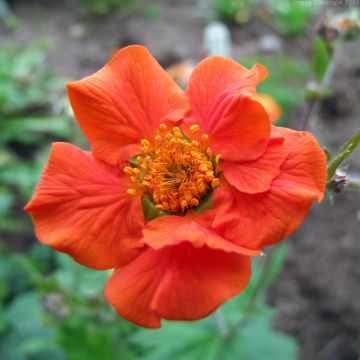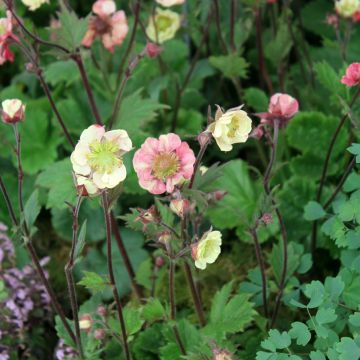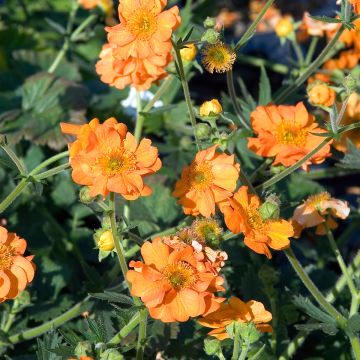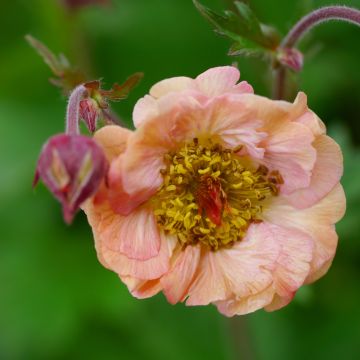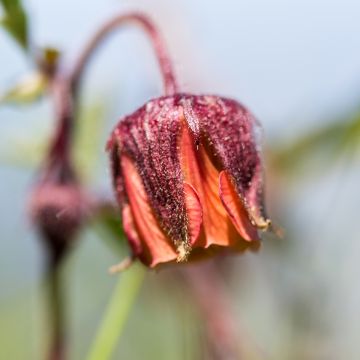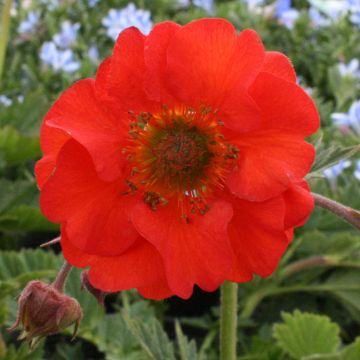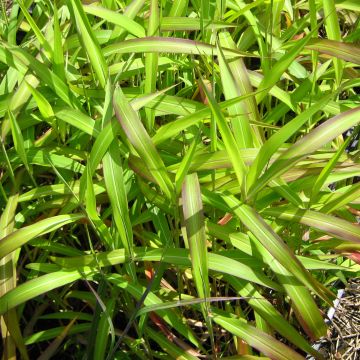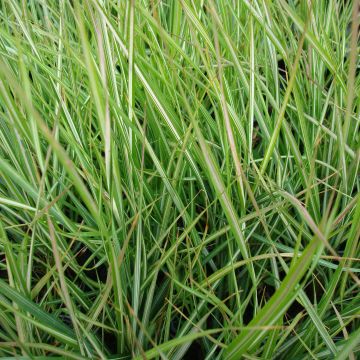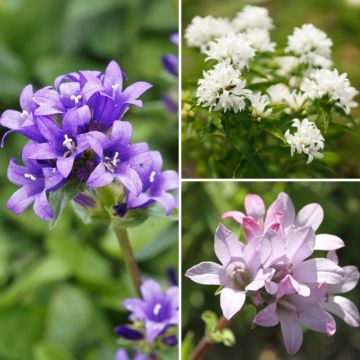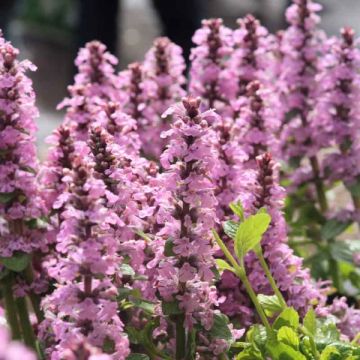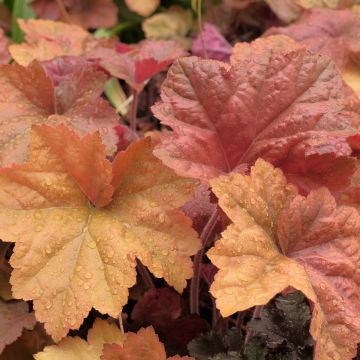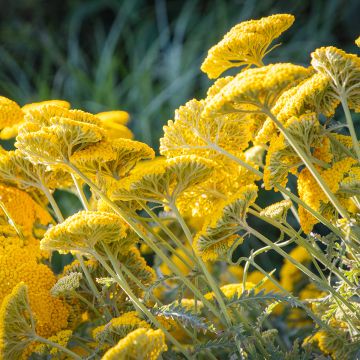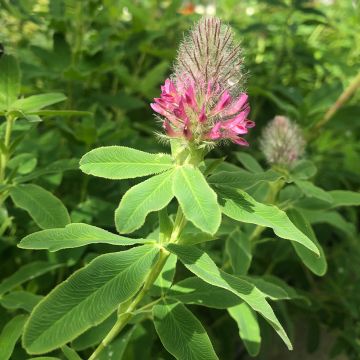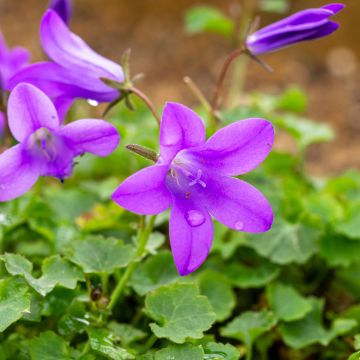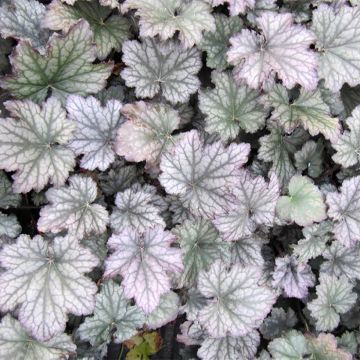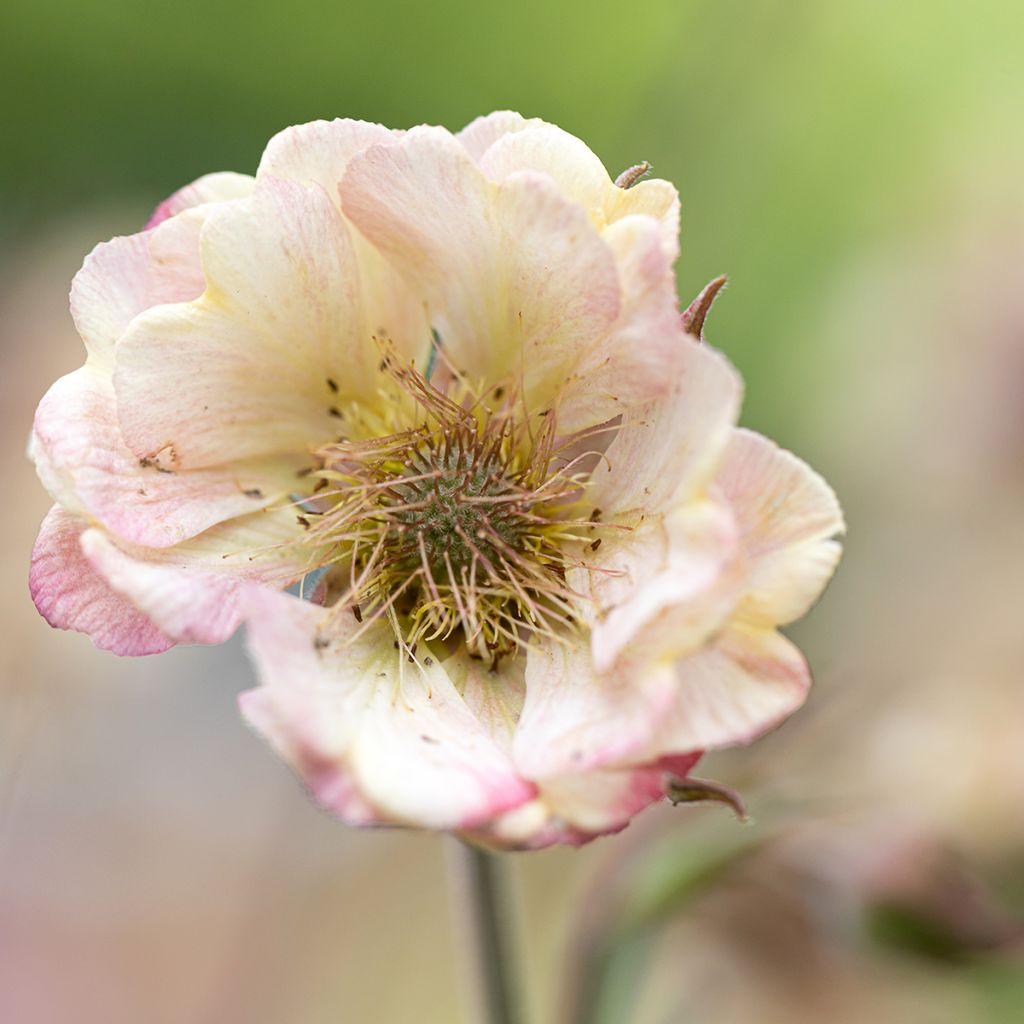

Geum Two Tone Pearl - Avens
Geum Two Tone Pearl - Avens
Geum Censation™ Two Tone Pearl
Avens
Why not try an alternative variety in stock?
View all →This plant carries a 12 months recovery warranty
More information
We guarantee the quality of our plants for a full growing cycle, and will replace at our expense any plant that fails to recover under normal climatic and planting conditions.
From €5.90 for pickup delivery and €6.90 for home delivery
Express home delivery from €8.90.
Does this plant fit my garden?
Set up your Plantfit profile →
Description
Geum 'Two Tone Pearl' (Censation Series) is a floriferous Dutch hybrid Avens with soft tones. Its semi-double flowers come in a pale yellow and cream, touched with purple at the base of the petals. The plant forms a modest clump of semi-evergreen bright green foliage and blooms for at least six weeks from mid-April. This hardy and robust perennial appreciates moist, well-drained, and fertile soil. It tolerates some shade.
Avens (Geum) are hardy herbaceous perennials from the Rosaceae family, native to temperate or colder regions of the northern and southern hemispheres. Crossed with each other, they have given rise to numerous hybrids, including Censation 'Two Tone Pearl', belonging to a series of varieties carefully selected in the Netherlands for their ornamental qualities. This compact and clump-forming variety measures about 30 to 35 cm high with an equal width. It forms a clump of upright basal leaves, which can persist in winter. They are quite deep but vibrant green, irregular, and finely velvety, measuring 10 cm long and wide. This Avens has cymes bearing several semi-double, cup-shaped flowers, on thin, loosely upright, branched stems above the foliage. The first ones to bloom, in April, measure 4 cm in diameter. Once flowering is well underway, the abundantly produced corollas are slightly smaller. The flowers are composed of pale yellow to cream, slightly translucent petals with a purple base. Like many long-flowering perennials, this Avens is not very long-lived, so it is a good idea to divide it every three years to keep it in the garden for a long time. This sterile variety does not produce seeds.
Avens Censation 'Two Tone Pearl' is a floriferous, modest-sized, but sturdy and rather easy-to-grow plant. It is accommodating and will appreciate being exposed to gentle sun, partial shade, or even not too dense shade. To fully appreciate it, plant it in borders or rockeries, making sure to give it space, so it is not too overwhelmed by larger plants. Its lovely colour will be beautiful with other Avens or spring perennials such as hardy geraniums, lady's mantle, salvias, and low grasses. In partial shade, it pairs well with delicate perennials like meadow rues or masterworts. Purple heucheras create a harmonious combination. It is also very pretty in bouquets.
Report an error about the product description
Flowering
Foliage
Plant habit
Botanical data
Geum
Censation™ Two Tone Pearl
Rosaceae
Avens
Cultivar or hybrid
Other Geum - Avens
Planting and care
Geum Censation 'Two Tone Pearl' is hardy to at least -15°C and appreciates a sunny or semi-shaded, open location, as well as a regular to rich, light, slightly moist during the season, but well-drained soil. Geums do not tolerate excessive winter moisture, so waterlogged soils should be avoided. On the other hand, they need moisture throughout their growth and flowering period.
Planting can be done in spring or autumn. Be sure to regularly remove faded flowers to encourage the emergence of new flower buds and ensure continuous flowering. Since the lifespan of Geum is quite short, it is advisable to divide the clumps every 3 or 4 years, in spring or autumn. Regular application of organic fertiliser is beneficial for them.
Geums are resistant to diseases but sometimes susceptible to sawfly larvae attacks, which can damage the foliage. Excessive drought can also make them susceptible to powdery mildew.
Planting period
Intended location
Care
This item has not been reviewed yet - be the first to leave a review about it.
Summer flowering perennials
Haven't found what you were looking for?
Hardiness is the lowest winter temperature a plant can endure without suffering serious damage or even dying. However, hardiness is affected by location (a sheltered area, such as a patio), protection (winter cover) and soil type (hardiness is improved by well-drained soil).

Photo Sharing Terms & Conditions
In order to encourage gardeners to interact and share their experiences, Promesse de fleurs offers various media enabling content to be uploaded onto its Site - in particular via the ‘Photo sharing’ module.
The User agrees to refrain from:
- Posting any content that is illegal, prejudicial, insulting, racist, inciteful to hatred, revisionist, contrary to public decency, that infringes on privacy or on the privacy rights of third parties, in particular the publicity rights of persons and goods, intellectual property rights, or the right to privacy.
- Submitting content on behalf of a third party;
- Impersonate the identity of a third party and/or publish any personal information about a third party;
In general, the User undertakes to refrain from any unethical behaviour.
All Content (in particular text, comments, files, images, photos, videos, creative works, etc.), which may be subject to property or intellectual property rights, image or other private rights, shall remain the property of the User, subject to the limited rights granted by the terms of the licence granted by Promesse de fleurs as stated below. Users are at liberty to publish or not to publish such Content on the Site, notably via the ‘Photo Sharing’ facility, and accept that this Content shall be made public and freely accessible, notably on the Internet.
Users further acknowledge, undertake to have ,and guarantee that they hold all necessary rights and permissions to publish such material on the Site, in particular with regard to the legislation in force pertaining to any privacy, property, intellectual property, image, or contractual rights, or rights of any other nature. By publishing such Content on the Site, Users acknowledge accepting full liability as publishers of the Content within the meaning of the law, and grant Promesse de fleurs, free of charge, an inclusive, worldwide licence for the said Content for the entire duration of its publication, including all reproduction, representation, up/downloading, displaying, performing, transmission, and storage rights.
Users also grant permission for their name to be linked to the Content and accept that this link may not always be made available.
By engaging in posting material, Users consent to their Content becoming automatically accessible on the Internet, in particular on other sites and/or blogs and/or web pages of the Promesse de fleurs site, including in particular social pages and the Promesse de fleurs catalogue.
Users may secure the removal of entrusted content free of charge by issuing a simple request via our contact form.
The flowering period indicated on our website applies to countries and regions located in USDA zone 8 (France, the United Kingdom, Ireland, the Netherlands, etc.)
It will vary according to where you live:
- In zones 9 to 10 (Italy, Spain, Greece, etc.), flowering will occur about 2 to 4 weeks earlier.
- In zones 6 to 7 (Germany, Poland, Slovenia, and lower mountainous regions), flowering will be delayed by 2 to 3 weeks.
- In zone 5 (Central Europe, Scandinavia), blooming will be delayed by 3 to 5 weeks.
In temperate climates, pruning of spring-flowering shrubs (forsythia, spireas, etc.) should be done just after flowering.
Pruning of summer-flowering shrubs (Indian Lilac, Perovskia, etc.) can be done in winter or spring.
In cold regions as well as with frost-sensitive plants, avoid pruning too early when severe frosts may still occur.
The planting period indicated on our website applies to countries and regions located in USDA zone 8 (France, United Kingdom, Ireland, Netherlands).
It will vary according to where you live:
- In Mediterranean zones (Marseille, Madrid, Milan, etc.), autumn and winter are the best planting periods.
- In continental zones (Strasbourg, Munich, Vienna, etc.), delay planting by 2 to 3 weeks in spring and bring it forward by 2 to 4 weeks in autumn.
- In mountainous regions (the Alps, Pyrenees, Carpathians, etc.), it is best to plant in late spring (May-June) or late summer (August-September).
The harvesting period indicated on our website applies to countries and regions in USDA zone 8 (France, England, Ireland, the Netherlands).
In colder areas (Scandinavia, Poland, Austria...) fruit and vegetable harvests are likely to be delayed by 3-4 weeks.
In warmer areas (Italy, Spain, Greece, etc.), harvesting will probably take place earlier, depending on weather conditions.
The sowing periods indicated on our website apply to countries and regions within USDA Zone 8 (France, UK, Ireland, Netherlands).
In colder areas (Scandinavia, Poland, Austria...), delay any outdoor sowing by 3-4 weeks, or sow under glass.
In warmer climes (Italy, Spain, Greece, etc.), bring outdoor sowing forward by a few weeks.

































